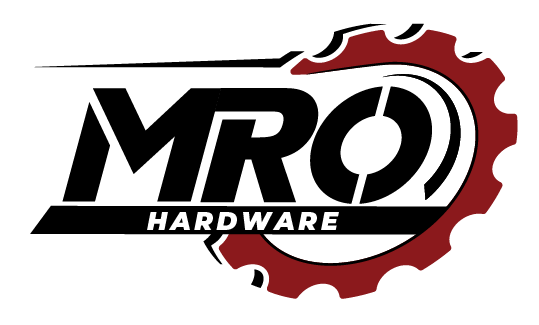Rivets are a staple in manufacturing and construction, offering a dependable way to join materials when welding or bolting just isn’t going to cut it. You’ll run into a handful of main types—solid, blind, tubular, split, self-piercing, and drive rivets—each designed for specific tasks and materials. Getting familiar with the different rivet types can make a huge difference when you’re picking a fastener for strength, looks, or just to make life a little easier during installation.
It’s honestly kind of impressive how adaptable rivets have become, especially as technology keeps moving forward. The right one will make sure your project lasts—whether you’re working on aircraft, fixing up an old trailer, or just tackling a weekend DIY.
Fundamental Types of Rivets
Rivets really pull their weight in all sorts of industries, and the main types—solid, blind, and tubular rivets—each bring something different to the table. Their strengths, how you install them, and where they work best can vary quite a bit.
Solid Rivets
Solid rivets, or bucked rivets as some folks call them, have been around forever. When you need real strength and durability—think ships, aircraft, or heavy frameworks—these are the go-to fasteners. Their solid shank (usually aluminum, brass, copper, or steel) gets mashed into place during installation, locking everything together with a broad, sturdy surface.
You’ll need access to both sides of your material, since installing these means hammering or using a rivet gun to “buck” the tail. It’s not exactly a quick job, but you end up with a joint that won’t budge, even if things start to shake or rattle. For anything load-bearing or safety-related, solid rivets are still tough to beat.
Blind Rivets
Blind rivets—most people know them as pop rivets—are a lifesaver when you can only reach one side of what you’re fastening. That’s why they’re so popular in repairs, car work, or anywhere you just can’t get behind the panel.
A blind rivet has a tubular body and a mandrel. When you pull the mandrel through with a rivet gun, it flares out the body and then snaps off, leaving a neat finish. This one-sided install really speeds things up, so they’re everywhere in production and quick fixes. You’ll find them made from aluminum, stainless, copper, even nylon, depending on what you’re working with and whether you need corrosion resistance.
Tubular Rivets
Tubular rivets have a partially hollow shank, which makes them a lot easier to set than solid ones. They’re not for heavy-duty stuff, but if you’re putting together leather goods, small electronics, or light metal assemblies, they’re perfect.
You don’t need to hammer them as hard—just deform the end of the hollow shank and you’re done. They spread the load out nicely, so you’re less likely to damage the material. Aluminum, brass, copper, stainless steel—you’ve got options here too, whether you care more about looks, strength, or rust resistance.
Tubular rivets are a favorite when you want a quick assembly and don’t want to add a lot of weight, but still need the joint to hold up.
Specialty and Application-Specific Rivets
Some rivets are made for really specific jobs or weird environments. You’ll see special designs for soft materials, high structural integrity, or industries like RVs, auto, and shipbuilding where the usual stuff just won’t cut it.
Split Rivets
Split rivets have a body with a tail that splits and spreads out as you set it. This makes them great for grabbing onto soft or brittle materials—plastic, leather, thin wood. They’re a go-to for light repairs, assembly, and crafts, since you don’t need much force to get them in.
Usually made from brass, aluminum, or copper, split rivets can be set with a hammer or a simple tool. The split design helps avoid cracking or wrecking delicate stuff. There are even plastic or nylon versions for spots where metal might corrode or just isn’t the right call, like in cars or RV interiors.
Olympic Rivets
Olympic rivets are a bit of a specialty item, mostly found where you need strength but also want to make repairs down the line. RVs, ships, and certain automotive jobs (GM vehicles, trailers) use these a lot.
Once you set them, Olympic rivets expand and lock in place, making a weather-tight seal—pretty important for exterior panels. They’re usually a mix of aluminum and steel, sometimes stainless. What’s cool is, if one gets damaged, you can swap it out without having to drill up the area around it. Saves time and keeps you from messing up the frame.
Material and Industry Considerations
Picking the right rivet material really matters—it’s not just about safety, but also how well things hold up over time. Aluminum rivets are a favorite because they’re light and don’t rust easily, which is why you’ll see them all over vehicles, RVs, and boats. Then there’s stainless steel—tough and stubbornly resistant to corrosion, so it’s an obvious choice for anything near water.
Sometimes, though, you want something that looks good or carries a current. That’s where brass or copper rivets come in; plus, they can shrug off specific types of corrosion. And let’s not forget about nylon or plastic rivets. These are handy for lightweight builds or when you just don’t want any metal-on-metal weirdness, especially in assemblies that need to stay non-conductive. Honestly, matching your rivet to the job isn’t just a box to tick—it’s what keeps everything together, no matter the industry.

